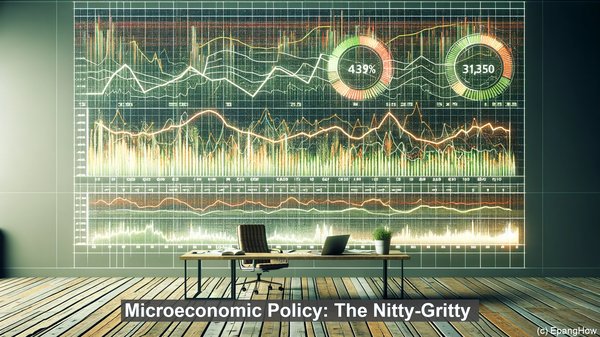Introduction: The Broad Spectrum of Economic Policies
Hello everyone! Welcome to today’s article, where we’ll be diving into the intriguing world of economic policies. Often, when discussing policies, we encounter two distinct terms: macroeconomic policy and microeconomic policy. While they may sound similar, they actually refer to different spheres of economic decision-making. Let’s explore their dissimilarities and understand how they shape the economic landscape.

Macroeconomic Policy: The Big Picture
Macroeconomic policy deals with the overall functioning and performance of an economy. It encompasses measures taken by governments and central banks to influence factors such as inflation, unemployment, and economic growth. Some common macroeconomic policies include fiscal policy, monetary policy, and exchange rate policy. These policies are typically implemented at a national or regional level and have far-reaching consequences for the entire economy.

Microeconomic Policy: The Nitty-Gritty
On the other hand, microeconomic policy zooms in on specific markets, industries, and individual economic agents. It focuses on the behavior of consumers, producers, and resource allocation within these smaller units. Microeconomic policies aim to enhance market efficiency, address market failures, and promote fair competition. Examples of microeconomic policies include regulations on monopolies, consumer protection laws, and policies to support small businesses.
Objectives: Macro vs. Micro
The objectives of macroeconomic and microeconomic policies also differ. Macroeconomic policies primarily aim to stabilize the overall economy, ensuring sustainable growth, low inflation, and low unemployment. They often involve managing aggregate demand, controlling interest rates, and influencing government spending. On the other hand, microeconomic policies focus on enhancing the efficiency and fairness of individual markets. They seek to address issues like information asymmetry, externalities, and market power.
Policy Tools: The Arsenal of Measures
To achieve their objectives, macroeconomic and microeconomic policies employ different tools. Macroeconomic policies often rely on fiscal measures, such as taxation and government spending, to influence aggregate demand. Monetary policy, which involves controlling the money supply and interest rates, is another crucial macroeconomic tool. In contrast, microeconomic policies utilize a range of tools, including regulations, subsidies, and market-based mechanisms like auctions or tradable permits.
Interactions and Interdependencies
While macroeconomic and microeconomic policies may seem distinct, they are interconnected and can influence each other. For instance, a change in interest rates, a macroeconomic tool, can impact borrowing costs for individual firms, thus affecting their microeconomic decisions. Similarly, a shift in consumer behavior, a microeconomic factor, can have broader implications for aggregate demand and, consequently, macroeconomic stability.
